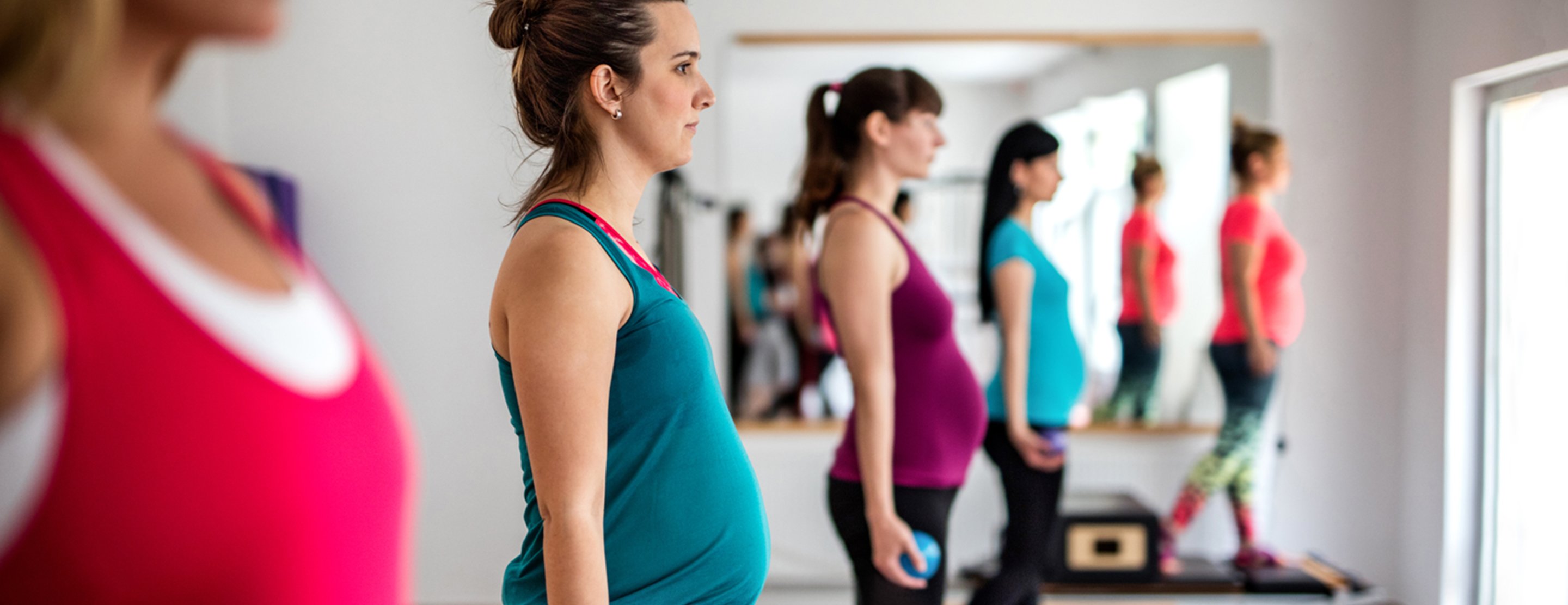
Exercise During Pregnancy
During a pregnancy, most people can – and should – engage in mild to moderate exercise. Being active can help you stay in shape as well as prepare your body for labor and delivery. If you're healthy and having a normal pregnancy, you should get at least 150 minutes of moderate-intensity exercise each week. But before beginning a new regimen, talk with your health care provider to determine activities are safe for you.
Walking, swimming and cycling on a stationary bike are all excellent forms of exercise during pregnancy. Strengthening exercises are appropriate using light weights. You may also want to consider prenatal yoga or Pilates classes in which the instructors modify positions to account for changes in balance.
Benefits of exercise during pregnancy
Working out while pregnant can:
- Improve strength, stamina and overall fitness
- Ease constipation
- Boost mood
- Improve sleep
- Increase flexibility
- Promote healthy weight gain
- Relieve back pain
- Strengthen the muscles used during labor and delivery
Exercise may also reduce your risks of preeclampsia, gestational diabetes and caesarean birth.
Be aware of physical changes
While exercise is generally a good thing during this time, you should keep a few key points in mind while doing any activity:
- Your balance and center of gravity will change as your baby grows.
- You may feel short of breath as oxygen demands change.
- Blood volume increases during pregnancy, so your heart's workload increases.
- Pregnancy hormones can loosen and stretch ligaments, raising injury risk.
How to exercise safely
It's always important to warm up and cool down. Take five to 10 minutes at the beginning of your exercise session to gradually warm your muscles and prepare your body. As you finish the session, slow down over several minutes rather than stopping abruptly. The warmup and cool-down periods can be the same form of activity – for example, walking or swimming – but should be performed at a lower intensity and speed.
Other important tips include:
- Dress for the weather.
- Wear clothing appropriate for the activity, such as supportive shoes for walking.
- Drink plenty of fluids.
- Eat a healthy, balanced diet.
Safety tips
- Don't overdo it. Stop exercising if you become short of breath, and don't exercise to the point of exhaustion. If you're working hard to breathe, you may be compromising oxygen delivery to your developing baby.
- Don't take risks. Skip any activity that could cause trauma to your abdomen, such as skiing or contact sports.
- Don't perform exercises that involve bouncy or high-impact motions.
- Avoid exercises that compress the uterus.
- Avoid exercises that could make you overheat, such as hot yoga.
- During the second and third trimesters, don't do exercises that require lying flat on your back. This position is associated with a decrease in blood flow and oxygen delivery to the fetus.
Warning signs to watch for
Stop exercising and call your doctor if you experience any of the following:
- Feeling dizzy or faint
- Leaking fluid
- Regular painful contractions
- Significant pain
- Significant shortness of breath
- Vaginal bleeding
When to avoid exercise
Don't exercise if:
- You are at risk for preterm labor.
- You are bleeding or leaking fluid.
- Your water has broken.
- You have preeclampsia (a pregnancy complication marked by a sudden increase in blood pressure).
- You have other medical conditions or complications that require limiting physical activity.
- You are on bed rest.
Before exercising during pregnancy, talk with your health care provider about any precautions you should take or ways you should limit your activities.
UCSF Health medical specialists have reviewed this information. It is for educational purposes only and is not intended to replace the advice of your doctor or other health care provider. We encourage you to discuss any questions or concerns you may have with your provider.




















